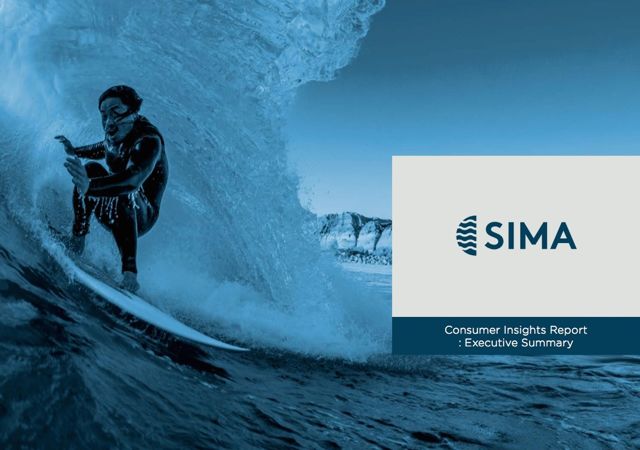A new Consumer Insights Report released by the Surf Industry Manufacturers Association (SIMA) unveils several key findings about the surf-inspired consumer market, including the disruption of traditional surf retail as surf-inspired consumers continue to move to online purchasing and the importance of the female consumer to the industry.
The report aims to better define and establish the size of the surf-inspired market, as well as provide a deeper look at the segments that make up the market. As defined by SIMA, the surf-inspired market is those who surf, those who are interested in surfing, and those who are interested in or purchase surf brands.
According to the report, the surf-inspired market is equal to 66.5 million adults, or 27.8% of total adults in the United States. Of that, 2.2 million are reported to be surfers.
Amazon the Biggest Industry Channel
Amazon and online shopping have disrupted the marketplace for surf-inspired consumer access to surf industry brands, according to the report. While 60% of all surf-inspired consumer spending happens in brick-and-mortar stores, the surf-inspired consumer continues to move to online buying.
Of all last purchases by surf-inspired consumers, Amazon has a 19% share, making the online retail giant the number one channel for consumers to find surf brands. The report also notes mall specialty (19%) and department stores (15%) as “hot,” while specialty surf/skate shops are noted as “cold” with only a 4% share of overall surf-inspired brand most recent purchases.
Big Opportunity with Female Fashionistas
The report reveals four consumer profiles within the surf-inspired market: the fashionistas, which comprise 37% of the 66.5 million surf-inspired consumers; the core-influenced consumer (23%); the affluents (23%), and impulse buyers (17%).
Purchasing based on product aesthetics and price, the fashionista segment shows that the female consumer is of more importance to the surf industry than ever before. The report shows her as the majority consumer in the youngest consumer profiles, and she has slightly over half of all the spending power for surf industry brands.
While the female dominated fashionista segment does not show a strong interest in participating in surfing, the ever-important core-influenced consumer segment, which has the highest interest in surfing, is reportedly comprised equally – 50% women and 50% men.
Additionally, the report focused on three more key insights said to have a direct impact on the industry:
- Surf brands are resonating and still very important to surf-inspired consumers regardless of age, race or gender. Customers own, on average, at least four brands they perceive to be from the surf industry, and the core-influenced consumer reports wearing surf brands “all the time.”
- Product is still king. Product quality and value trump the importance of brand reputation or popularity, with the highest values for clothing placed on fit, comfort and quality.
- Interest in watching and participating in surfing is high for the core-influenced consumer.
SIMA is hosting a Consumer Insights Study Boot Camp on March 1st at the Ocean Institute in Dana Point, Calif., where topline data from the study will be presented.
“One of SIMA’s main objectives is to provide our members with data to help them grow their businesses,” SIMA Insights Committee Chairman, Dan McInerny said in a statement. “What has been missing in our industry is independent consumer data and insights that can tell us what is really going on in the surf market – especially the broader consumer base outside of the die-hard surf segment. This is a study that not only delivers actionable insights, but also is very unique in that it offers an in-depth look into the entire consumer base that surf reaches. It’s also a huge value to SIMA members as all members in good standing will receive the study at no cost.”
Learn more and register for the Boot Camp at https://sima.com/consumer-study-boot-camp/.
Non-SIMA members can purchase the study for $1,250. Full details can be found at https://sima.com/sima-consumer-insights-study/.






